

Posted on Monday 20 February 2017
The second half of our trip was from Marlborough Sounds to Abel Tasman, before heading back to Dunedin via Kaikoura. Sadly bad weather prevented us from going to Kapiti Marine Reserve.
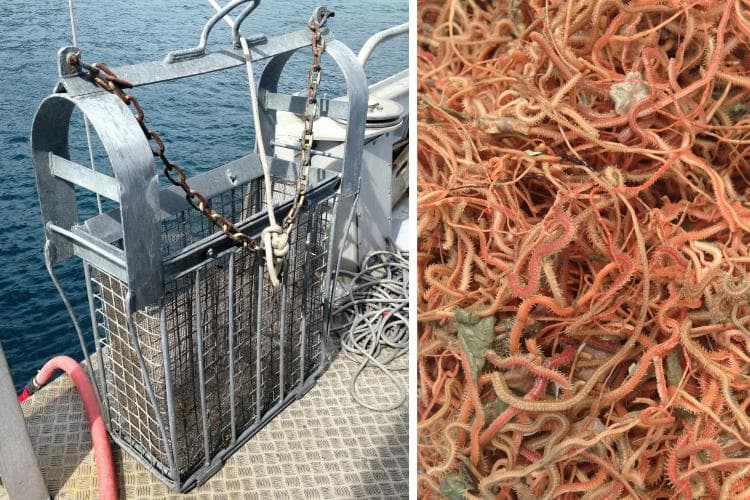
Day 9: We’d been doing so much diving that we decided to have a dive free day. Instead, we did CTD (conductivity, temperature, depth) casts, grab samples, dredge samples, plankton tows, and water samples from some mussel and salmon farms in Otanerau Bay. This is the dredge before it goes down – and a tangled mess of brittle stars it collected.
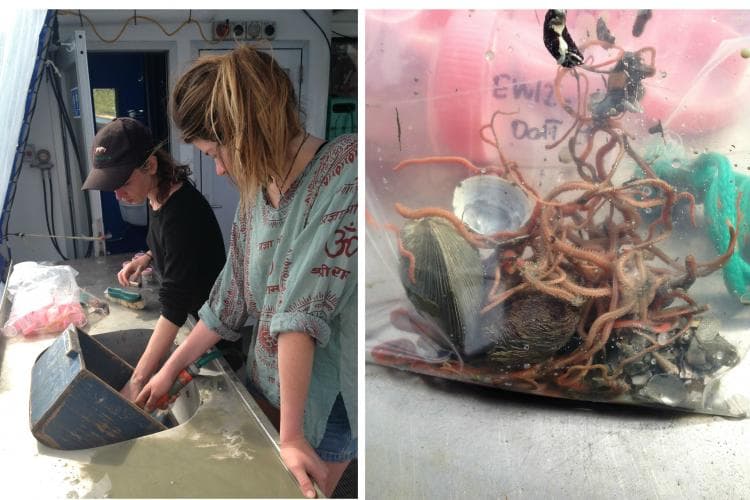
Day 9: Marine science can get messy! Here Rebecca and Jacquetta sieve a grab sample. One of the grab samples (pictured) had a cockle, a heart urchin, some brittle stars, and shell hash. In the evening we headed to Ruakaka Bay where Jacquetta and I swam ashore to a little beach and found a shag nest with a parent and chick.

Day 10: We started sampling around the salmon farm on the west head of Ruakaka Bay, then did a collection dive to collect spotties and blue cod as well as a range of invertebrates and macro-algae. We saw spotties in the shallows, but in deeper water we also saw blue cod. The weather started to turn as we headed to the control site in Blackwood Bay, and as we started the CTD (conductivity, temperature and depth) cast and plankton tow the wind got much worse. Luckily we managed to finish sampling from the boat before heading to the Bay of Many Coves (Miritu Bay) to find shelter for the night. This is a kina, some eleven-armed sea stars, and a horse mussel we collected on the dive.

Day 10: Rebecca bags up sea cucumbers.
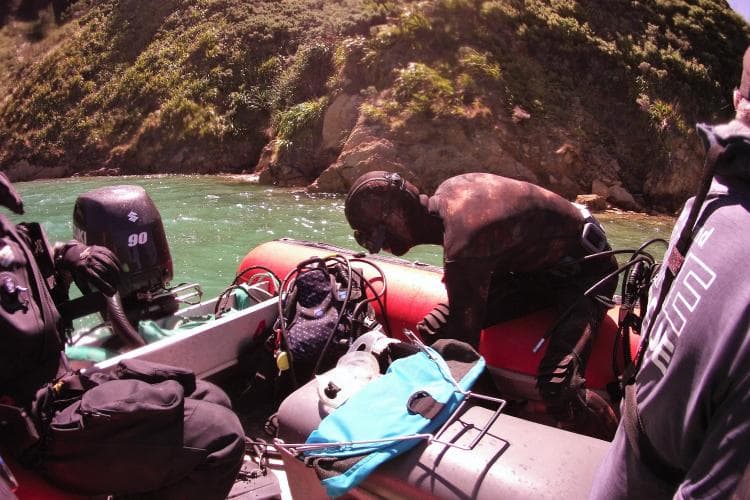
Day 11: It was very windy overnight, but luckily as we woke up and got ready to dive the sun came out and the sky cleared. The dive team did a quick collection dive for the control site organisms. We then went back to the salmon farm in Otanerau Bay to do our final collection dive. This is Jack getting ready to dive.
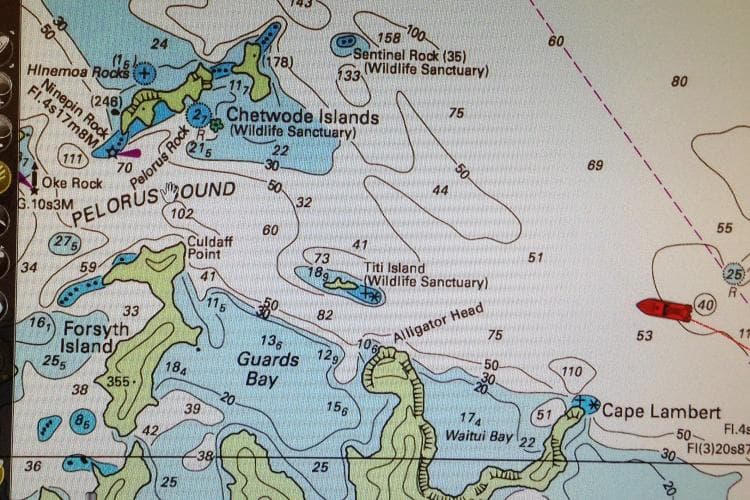
Day 11: The weather was not looking good for the next few days so to avoid crossing the Cook Strait in high winds, we headed towards Tonga Island Marine Reserve, instead of going to Kapiti Marine Reserve. We headed out of Queen Charlotte Sound – stopping for a final fish – before heading towards Pelorus Sound to anchor for the night.
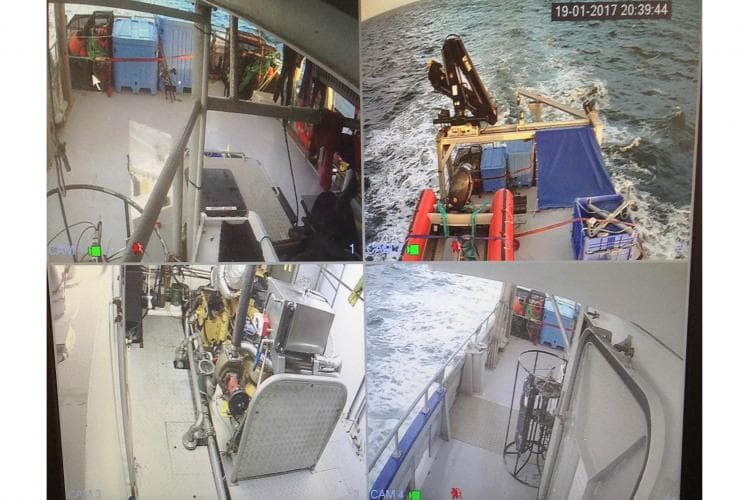
Day 11: Cameras watch the outside of the boat and the engine room for any issues caused by the bad weather.

Day 12: In the morning we made our way to Tonga Island Marine Reserve crossing through French Pass at the south end of Rangitoto ki te Tonga/D'Urville Island. We did two survey dives inside the marine reserve, at Tonga Island and at Foul Point, with a CTD (conductivity, temperature and depth) cast, water sampling and a plankton tow. These are mussel beds at Tonga Island.
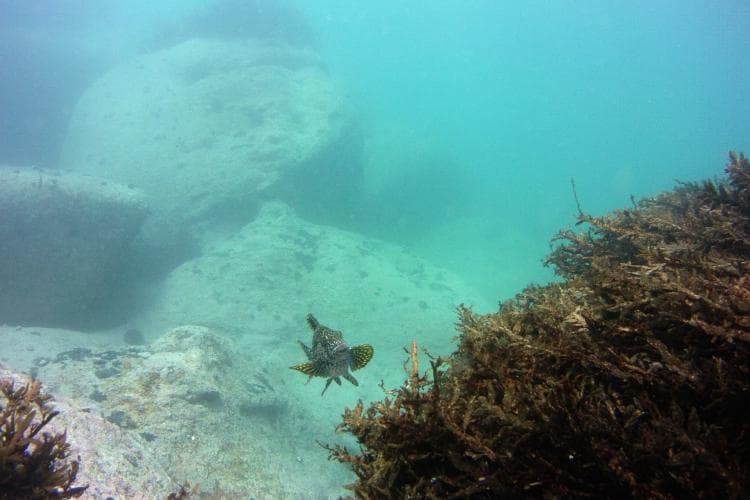
Day 12: A marblefish floating above the kelp.
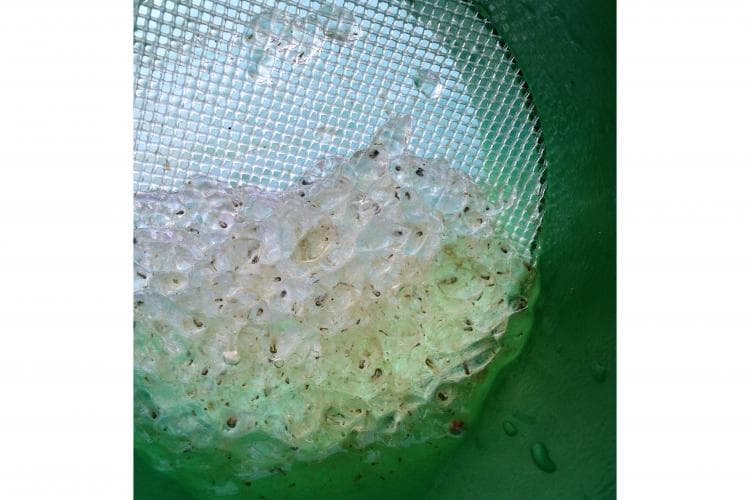
Day 12: We anchored in Tasman Bay across from a section of the Abel Tasman Coast Track. Jacquetta, Sorrel and I swam to the beach before the sun went down – the water was so thick with salps (marine animals without backbones that join together in chains) that at some points that you couldn’t see the shallow bottom. These are salps collected from a plankton tow.
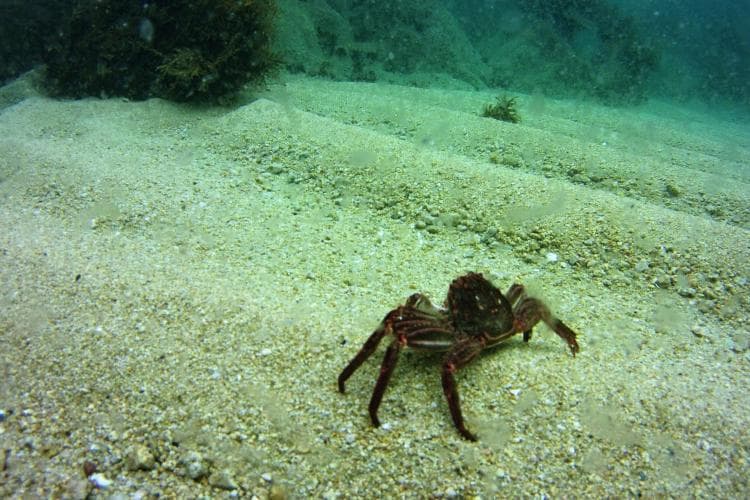
Day 13: In the morning we found out that that the weather would soon turn too bad to dive so we squeezed in as many dives possible into our short window – we moved outside of the reserve to do collection dives at Totaranui point and Anapai point. We had time for one more dive so headed back into the reserve to Abel Head for another survey dive. This is a crab in the shallows around Anapai point – I also saw large blue moki, red moki, marblefish and seals.

Day 13: We stopped at Harding Point to fish at sunset and managed to catch some very large blue cod including one gravid (pregnant) female. We continued through to Queen Charlotte Sound and anchored for the night in Ship Cove. The wind made for a rocky night! Keeping good records is really important – this is Rebecca filling in her dive log.
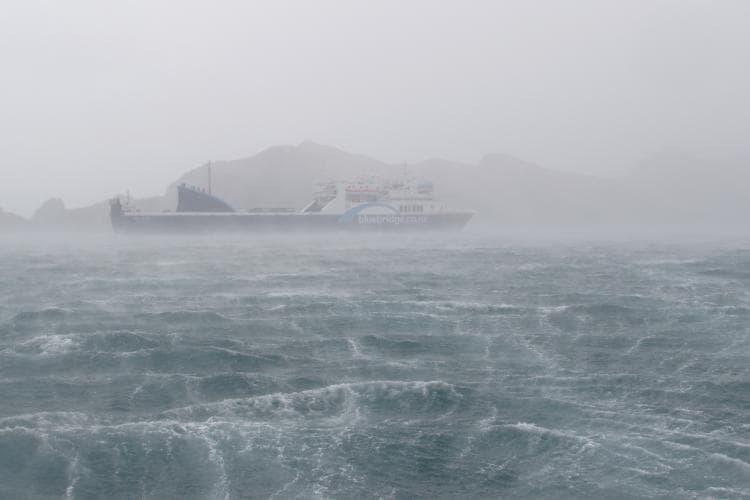
Day 14: We had to stay in the sheltered cove until the wind allowed us to continue out to Tory Channel, but the weather was too bad to leave the sounds. We tried to shelter in Okukari Bay on the outer edge of the channel (we could just see the ferry!), but had to move back in to Te Awaiti Bay. We finally left the sounds in the early evening when the wind died down. We made our way down the coast through the evening in pretty rough conditions. We got to Kaikoura about 2:30am, and anchored there to avoid harsh winds further down the coast. (Photo: Rebecca McMullin)

Day 15: In the morning we continued down the coast, and were treated to a lovely sunny afternoon. On our way past Pegasus Bay we saw sharks, seals, penguins, Hector’s dolphins, albatross, and lots of kelp drifting past. We watched sunset over Banks Peninsula and continued through the night towards Dunedin.

Day 16: We woke just south of Timaru and continued down the coast. We arrived at Otago Peninsula in late afternoon, and made our way back to Careys Bay (pictured) where we started our trip. The samples collected on the trip were sorted and stored at Portobello Marine Laboratory the next day. It was a busy trip! We did: 29 CTD (conductivity, temperature and depth) casts; 79 water samples; 36 plankton tows; 13 fish population survey dives; 14 collection dives; 69 grab samples; and 9 dredge samples.